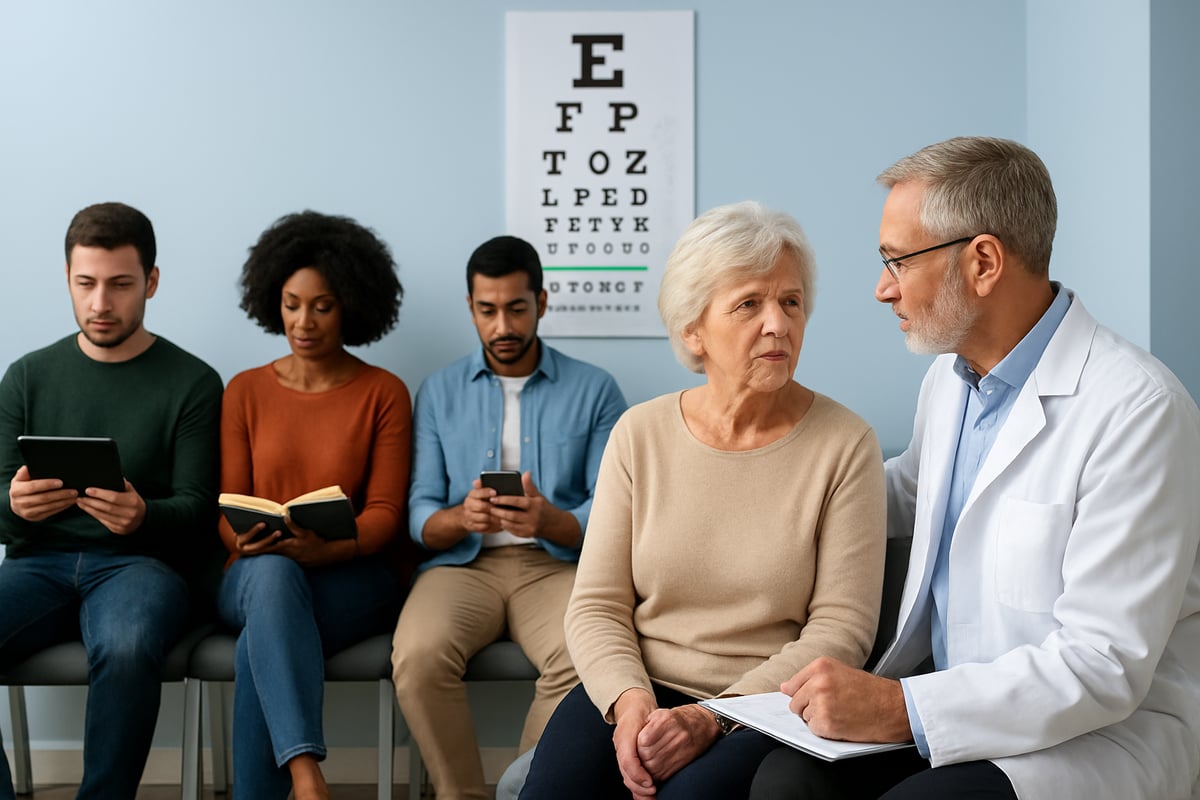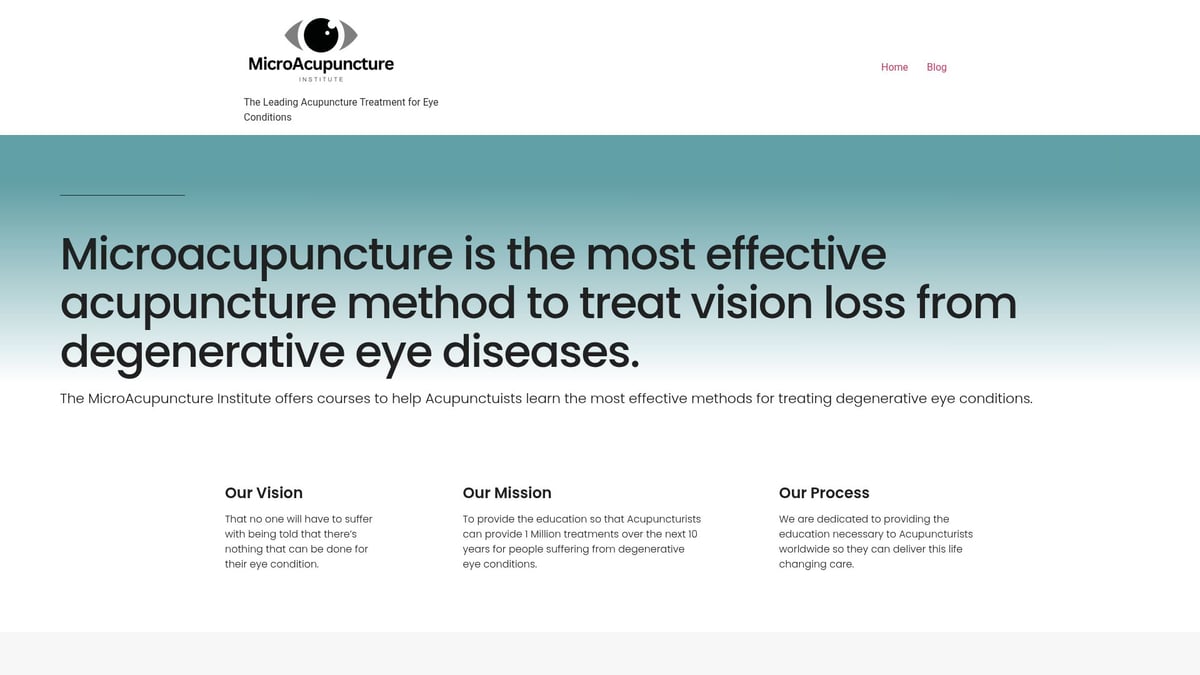Over 250 million people worldwide are expected to experience vision fading by 2025, reflecting a dramatic rise in sight-related challenges. This surge is fueled by an aging global population, increased digital device use, and a higher prevalence of chronic diseases such as diabetes.
Early detection and proactive management are now more critical than ever. New treatment options offer hope for maintaining independence and quality of life, but understanding the risks and signs is essential.
This guide is designed to provide essential insights, share the latest research, and offer practical steps for recognizing and managing vision fading in 2025. We will explore causes, symptoms, cutting-edge diagnostic tools, innovative treatments, daily management strategies, and a look ahead at future trends.
Understanding Vision Fading: Causes and Risk Factors
Vision fading can result from a range of medical, lifestyle, and genetic factors. Recognizing these risks is essential for early intervention and maintaining eye health as we approach 2025.

Common Medical Causes of Vision Fading
Several medical conditions are primary drivers of vision fading. Age-related macular degeneration stands as the leading cause for adults over 60, gradually affecting central vision. Glaucoma, often developing without symptoms, damages the optic nerve and can cause irreversible loss if not detected early. Diabetic retinopathy results from uncontrolled blood sugar, impacting the retinal blood vessels.
Cataracts, which cloud the eye’s lens, are common with aging and lead to gradual vision fading. Inherited retinal diseases, such as retinitis pigmentosa, can cause progressive vision changes from a young age. Eye injuries and infections, while less common, may also result in sudden or chronic vision fading. Systemic diseases like hypertension and diabetes further increase the risk. For a comprehensive overview of these medical and lifestyle contributors, visit Causes of Vision Deterioration.
Lifestyle and Environmental Risk Factors
Modern lifestyles have introduced new risks for vision fading. Prolonged screen time is a major factor, with digital eye strain becoming increasingly prevalent among office workers and students. Poor nutrition, especially diets lacking antioxidants, can accelerate retinal damage. Smoking and excessive alcohol consumption are linked to higher rates of vision fading due to their negative impact on blood vessels and eye tissues.
Exposure to ultraviolet (UV) light without proper eye protection increases the risk for cataracts and other degenerative conditions. Inadequate use of sunglasses or protective eyewear during outdoor activities can further contribute to vision fading. Addressing these lifestyle and environmental factors is crucial for prevention and long-term eye health.
Demographic and Genetic Influences
Demographic and genetic factors play a significant role in vision fading risk. Prevalence increases with age, and data shows that 1 in 4 people over 75 experience significant vision loss. Gender also matters, with women slightly more likely to develop certain eye diseases due to longevity and hormonal factors.
Ethnic background is another key variable. African and Hispanic populations have higher rates of glaucoma, which can lead to vision fading if untreated. Family history and genetic predispositions increase the likelihood of inherited retinal diseases. Understanding these influences helps individuals assess their personal risk and seek timely care.
Early Warning Signs and When to Seek Help
Early signs of vision fading may include blurred vision, difficulty seeing at night, and loss of peripheral vision. People may also notice trouble reading, driving, or recognizing faces. Regular eye exams are vital for early detection, especially for those at higher risk. Prompt attention can make a significant difference in preserving vision and quality of life.
Recognizing the Symptoms: What to Watch for in 2025
Early recognition of vision fading is crucial for timely intervention and preserving eye health. In 2025, understanding what to look for can help individuals take proactive steps toward diagnosis and management.

Subtle and Overt Symptoms of Vision Fading
Vision fading often begins with subtle changes that can easily be overlooked. Common early signs include gradual blurring of objects, faded or washed-out colors, and increased sensitivity to light. Many people notice difficulty reading small print, driving at night, or recognizing familiar faces.
Other symptoms to watch for are visual distortions, such as straight lines appearing wavy, or the presence of blind spots in the field of vision. For more comprehensive information about degenerative causes and symptoms, visit the Degenerative Eye Diseases Overview.
Prompt recognition of these symptoms allows for earlier diagnosis and better outcomes.
Differentiating Temporary vs. Progressive Vision Loss
Not all vision fading is permanent. Temporary vision loss may result from eye fatigue, dry eyes, or side effects of certain medications. Migraines can also cause short-term visual disturbances that resolve on their own.
In contrast, progressive vision loss develops slowly and may indicate underlying conditions such as macular degeneration, glaucoma, or diabetic retinopathy. Sudden, severe changes in vision should always be treated as a medical emergency, as they may signal retinal detachment or stroke.
Understanding the difference between temporary and progressive symptoms is essential for determining when to seek immediate care.
Impact on Daily Life and Mental Health
Vision fading can significantly affect daily activities and emotional well-being. Individuals may experience reduced independence, increased risk of falls, and challenges with tasks like cooking or managing finances. Social withdrawal is common, as recognizing faces and moving confidently in public become more difficult.
The psychological impact is equally important. Anxiety, depression, and a fear of losing sight altogether are frequent concerns. Data shows that vision loss can double the risk of depression in older adults, underscoring the need for supportive care and community resources.
Building awareness and seeking timely help are key to maintaining quality of life.
Diagnostic Advances and Screening in 2025
Breakthroughs in diagnostic technology are reshaping how vision fading is identified and monitored. Early and accurate detection is now more accessible, helping people safeguard their sight as they age.
Modern Diagnostic Tools and Technologies
Today, diagnosing vision fading relies on advanced tools that offer unparalleled precision. Optical coherence tomography (OCT) provides cross-sectional images of the retina, making it easier to spot early disease signs. Digital retinal imaging enables high-resolution pictures, supporting doctors in tracking subtle changes over time.
AI-powered screening systems are now integrated into routine eye exams, delivering real-time analysis and flagging early indicators of diabetic retinopathy and other conditions. Teleophthalmology is expanding reach, allowing remote consultation and diagnosis for those in underserved areas. For example, AI systems can detect diabetic eye disease with over 90 percent accuracy, transforming the outlook for early intervention.
Recommended Screening Schedules by Age and Risk
Regular eye exams are essential for anyone concerned about vision fading. Adults over 40 should schedule annual screenings, while high-risk groups, such as those with diabetes or family history of eye disease, may need more frequent checks. Pediatric guidelines recommend vision screening at key developmental milestones to catch issues early.
According to CDC vision loss facts, early detection and timely treatment can slow the progression of many eye diseases by up to 60 percent. These screenings can make a major difference in maintaining independence and quality of life as people age, especially in populations with higher risk profiles.
Barriers to Early Diagnosis and How to Overcome Them
Despite technological advances, barriers remain for those facing vision fading. Costs, limited access to specialists, and lack of awareness can delay critical diagnosis. Many people in rural or low-income areas struggle to find convenient screening options.
Solutions are emerging to bridge these gaps. Telemedicine connects patients to eye care professionals remotely, while mobile screening units bring diagnostic services to community centers and schools. Outreach and education campaigns help raise awareness about the signs of vision fading and the importance of routine eye exams, empowering people to seek help sooner.
MicroAcupuncture Institute: Innovative Approaches for Degenerative Eye Diseases
Innovative approaches like MicroAcupuncture are gaining attention as complementary options for managing vision fading due to macular degeneration, glaucoma, or retinitis pigmentosa. This method involves specialized acupuncture techniques, supported by evidence from millions of treatments worldwide.

Patients with previously untreatable conditions have reported improved outcomes, such as better visual clarity and slower disease progression. MicroAcupuncture is most effective when combined with conventional treatments and guided by a specialist. Exploring alternative therapies alongside standard care offers hope for those confronting vision fading, broadening the spectrum of available options.
Treatment Innovations and Management Strategies
Advances in vision fading care are rapidly changing the landscape for patients in 2025. From groundbreaking therapies to smart technologies, new options are helping people protect and even restore their sight. Proactive management and personalized strategies are now central to addressing vision fading at every stage.

Latest Medical Treatments and Clinical Trials
Medical science is transforming how vision fading is treated. Anti-VEGF injections are the mainstay for macular degeneration, effectively slowing disease progression and preserving vision. Laser therapies and advanced glaucoma surgeries are giving patients more targeted options. Retinal implants are now available for certain types of blindness, offering hope where none existed before. Notably, FDA-approved gene therapies are changing the outlook for inherited retinal diseases.
Emerging treatments continue to gain traction. For a comprehensive overview of current and innovative approaches, explore Effective Vision Loss Treatments for practical insights into the evolving landscape. Clinical trials are ongoing, and staying informed ensures timely access to the latest options for vision fading.
Lifestyle Interventions and Preventive Measures
Lifestyle choices play a vital role in managing vision fading. Adopting a Mediterranean or antioxidant-rich diet supports ocular health and can slow the progression of disease. Regular exercise and weight management help control underlying risk factors such as diabetes and hypertension.
Avoiding smoking and limiting alcohol intake are essential preventive steps. Using blue light filters on digital devices and making ergonomic adjustments to workspaces protect eyes from strain. Simple daily habits can make a significant impact on the course of vision fading.
Assistive Technologies Enhancing Quality of Life
Technology is empowering people with vision fading to live more independently. Smart glasses and magnification devices enable users to read, recognize faces, and navigate unfamiliar spaces. Voice-activated assistants and specialized mobile apps offer real-time guidance for daily tasks.
These innovations have broad appeal. According to recent data, 70 percent of low vision patients benefit from assistive technology. By integrating these tools into daily routines, individuals can maintain a higher quality of life despite vision fading.
Integrative and Complementary Approaches
Many people are turning to integrative care for additional support with vision fading. Acupuncture and nutritional supplements like lutein and zeaxanthin are popular choices, with some studies showing benefits for retinal health. Vision therapy and occupational therapy help patients adapt to changes and maximize their remaining sight.
Patient experiences highlight the value of a multi-modal approach. Testimonials often mention improved visual function and greater confidence when combining conventional and complementary therapies. Seeking professional guidance ensures that all aspects of vision fading are addressed in a personalized care plan.
Daily Living: Practical Tips for Coping with Vision Fading
Living with vision fading brings daily challenges, but practical adjustments can make a significant difference. Adapting your environment, focusing on mobility, and nurturing emotional health are crucial steps for maintaining a fulfilling life.
Home Modifications and Safety Enhancements
Simple changes at home can greatly reduce risks associated with vision fading. Start by increasing ambient lighting in hallways and rooms. Use high-contrast markings on stairs and doorframes to improve navigation. Declutter walkways and secure loose rugs to minimize tripping hazards.
Label common appliances with tactile stickers or large-print labels. Organize frequently used items in consistent locations. These strategies help prevent falls—studies show that home modifications can cut fall risk by 40 percent.
For more daily management strategies, visit Caring for Eye Health, which offers practical advice for adapting living spaces and routines. These small steps can empower you to maintain independence as vision fading progresses.
Maintaining Independence and Mobility
Preserving independence is essential for those experiencing vision fading. Orientation and mobility training equips individuals with skills to navigate safely indoors and outdoors. White canes or guide dogs provide additional confidence and autonomy.
Explore local community resources and support groups focused on mobility and accessibility. Many cities offer ride-sharing and accessible transportation options for individuals with low vision. By leveraging these tools and services, people with vision fading can continue engaging in work, errands, and social activities with greater ease.
Emotional Wellness and Support Networks
The emotional impact of vision fading can be profound. Feelings of anxiety, frustration, or isolation are common. Seeking counseling or joining vision loss support organizations can offer valuable guidance and empathy.
Staying socially active and participating in hobbies can help maintain mental well-being. Research indicates that peer support reduces the risk of depression by 30 percent among adults with significant vision fading. Building a strong support network fosters resilience and a sense of belonging, making daily life more rewarding.
The Future of Vision Care: Trends and Predictions for 2025
As we look to 2025, vision fading is set to become an even more critical public health issue. Breakthroughs in medical research, digital health, and global policy are converging to reshape how society addresses vision fading and its impact.
Emerging Research and Promising Therapies
Research into vision fading is accelerating, with several exciting therapies on the horizon. Stem cell therapy and gene editing are advancing rapidly, offering hope for conditions previously considered untreatable. For example, bionic eye implants are beginning to restore partial sight to those with severe loss.
A recent new eye implant trial demonstrated that combining implants with augmented reality glasses enabled individuals with macular degeneration to read again. Clinical trials in 2025 are expected to yield more such breakthroughs, bringing new options for those facing vision fading.
The Role of Digital Health and AI in Eye Care
Digital health is revolutionizing how vision fading is managed. AI-powered diagnostic tools now analyze retinal images with unprecedented accuracy, helping doctors catch problems earlier. Remote monitoring enables patients to manage their eye health without frequent office visits.
Innovations in AI are also transforming treatment. For instance, AI in retinal surgery is making complex procedures safer and more precise. As teleophthalmology grows, personalized care for vision fading will become more accessible, improving outcomes for millions.
Global Initiatives and Public Health Strategies
Vision fading is not only a medical challenge but also a public health priority. The World Health Organization and national agencies are launching campaigns to improve awareness, increase screenings, and expand care in underserved communities.
By 2030, global vision impairment rates are projected to rise by 20 percent, underscoring the urgent need for coordinated strategies. As technology and research progress, these initiatives will be key to reducing the burden of vision fading worldwide.
As you’ve read, protecting and improving your vision is more important than ever, especially with the rising rates of degenerative eye conditions expected by 2025. If you or someone you care about is noticing changes in vision or has been diagnosed with a retinal or optic nerve condition, taking proactive steps now can make a real difference. Our specialized MicroAcupuncture treatments in Tampa are designed to restore blood flow and awaken dormant retinal cells, offering hope where traditional options may fall short. If you’re curious about how this could help you, I invite you to Schedule A Free Phone Call to explore your options.
